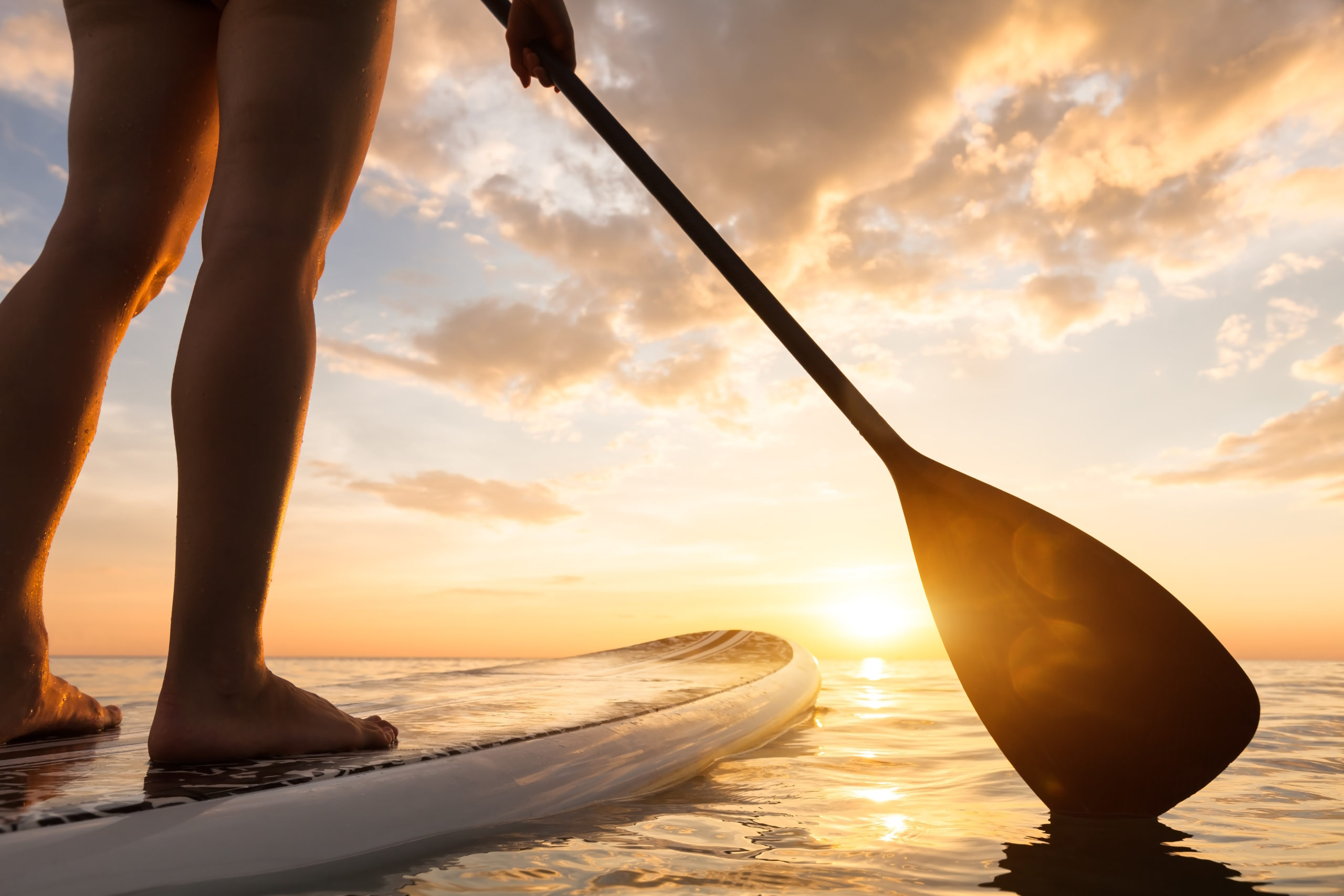What could be better than a day of paddling one of the Middle Peninsula’s scenic waterways? How about paddleboarding — a fun way to connect with nature without disturbing it. The good news is that SUP (standup paddleboarding) is also a full-body workout that can certainly contribute to your overall health goals.
What should you know before you go? Karen Kovacs, clinical director of Pivot Physical Therapy’s location at Gloucester Point, weighed in with five thoughts to help newbie paddleboarders get started in a sport that’s SUF (standup fun).
1
Paddling requires core strength. Standing on an unstable surface requires a stable trunk to generate force as you paddle. But paddling is not so much about strong abdominal muscles as it is about Latissimus dorsi (“Lats”); back muscles, are the primary force generators to glide through the water, Kovacs says. So, lay off the sit-ups and practice your plank, she suggests. The ideal is to hold a plank for two minutes, but if you can’t do that, start in increments. If you can only plank 10 seconds, increase by five seconds the next day. “When you can hold one plank for two minutes, it’s time to do something harder.”
2
Standing on a moving board combined with current and waves demands good balance. Improve yours by doing mini squats on a BOSU. Start on the dome side and work up to the flat side. If you don’t belong to a gym and don’t have a BOSU at home, substitute a firm pillow from outdoor furniture (a couch cushion can work. You don’t want a pillow that sinks when you stand on it). “As you’re moving, the pillow is going to move, which means you have to react,” Kovacs says. The practice will help on the water.
3
Be mindful of tissue loading. Don’t go too far or out for too long the first session. Let your body get used to the demands on muscles that you may not have used for a while. Ease into longer sessions. “If you go out the first time for two hours, you might not be able to move the next day,” Kovacs says.
4
Don’t underestimate the role endurance training plays in making paddleboarding more enjoyable. It takes stamina to move the board through the water and not get exhausted. Work on this by increasing the time you do aerobic exercise — walking, jogging or cycling, perhaps. Maybe you plan to paddle from Yorktown to Gloucester. “If you can walk briskly for 90 minutes or bike for 90 minutes, that’s not a realistic goal to start out with.” Kovacs says. “If you can manage 30 minutes of cardio, you can successfully paddleboard 30 minutes, too.”
5
Know your surroundings. Always paddle into the wind and current or incoming tide so you won’t have to work as hard on your way back when you are more tired. Avoid going out too far and paddle parallel to the shore so if you need to get back sooner than expected, it won’t be as difficult (or deep in many cases).
Bonus tip: Of course, pat yourself on the back while after paddleboarding, but don’t head for the cookie jar to fuel your recovery snack. Look for a healthy option. You don’t want to undo all that hard work by feasting on sugary treats.
See you on the water!
